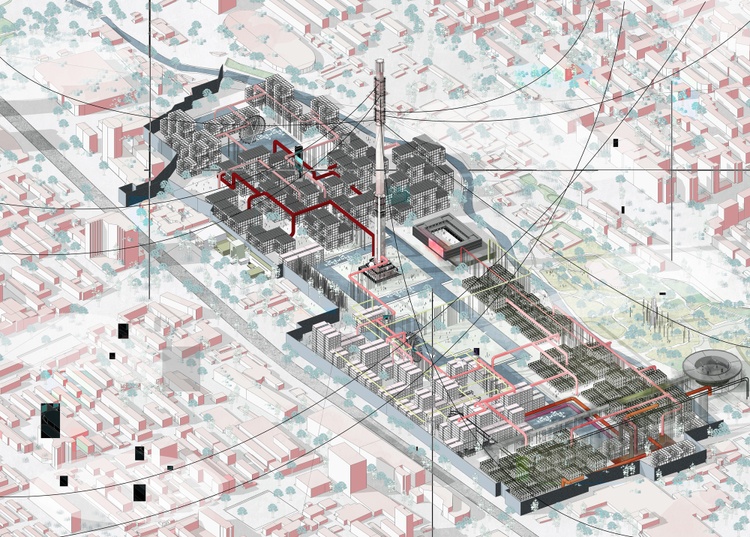The Creative Refine Behind Successful Tasks from CDA Architects
The Creative Refine Behind Successful Tasks from CDA Architects
Blog Article
An Extensive Overview of Architectural Designs and Their Influence on Modern City Planning and Advancement
Building designs have actually long served as a mirror to the societal values and technological innovations of their time, playing an important role in forming contemporary city preparation and development. From the magnificence of Neoclassicism to the utilitarian approach of Brutalism, each style has introduced one-of-a-kind ideas that affect city visual appeals and functionality.
Historical Overview of Building Styles

As societies transitioned with the Center Ages, Gothic style emerged, defined by its verticality and complex describing, mirroring the spiritual ambitions of the age. The Renaissance noted a revival of classical ideals, merging art and style in cutting-edge manner ins which affected succeeding styles throughout Europe.

Today, building styles proceed to evolve, driven by globalization and sustainability issues, mirroring a dynamic interaction between heritage and advancement. This historic introduction underscores the relevance of architecture as a mirror of social advancement and as a stimulant for city growth.
Key Architectural Styles Explained
The variety of building designs mirrors the myriad impacts that form our developed environment, each embodying distinct qualities and cultural values. Trick building designs include Timeless, Gothic, Baroque, Innovation, and Postmodernism, each representing special historical contexts and visual approaches.
Classic architecture, rooted in old Greece and Rome, emphasizes symmetry, percentage, and making use of columns (cda architects). In comparison, Gothic architecture, flourishing between Ages, is characterized by sharp arcs, ribbed safes, and flying buttresses, developing an angelic quality in cathedrals. Baroque architecture, arising in the 17th century, is marked by grandeur, fancy decoration, and a vibrant interplay of light and darkness
Innovation, which gained momentum in the very early 20th century, prioritizes feature over kind, using new products like steel and glass to produce minimalist structures. Postmodernism, reacting versus the austerity of Modernism, accepts eclecticism and historic referral, usually integrating playful elements and irony.

Impact on Urban Planning
In shaping the growth of cities, building designs significantly influence urban planning choices. The selection of building style typically dictates the looks, capability, and general character of urban settings.
In addition, architectural designs can affect zoning regulations and land make use of policies. Urban planners must think about the prevailing architectural patterns when creating areas, making sure that brand-new growths balance with existing structures. This factor to consider cultivates cohesive city landscapes and improves community identification.
The application of particular building designs can additionally influence socioeconomic elements within a city. As an example, premium contemporary layouts may attract upscale locals and companies, causing gentrification, while a lot more economical real estate services might prioritize sensible and lasting styles to fit varied populations. Eventually, the interaction in between building styles and city planning develops dynamic cities that mirror both historic context and modern demands, shaping the lived experiences of their residents
Sustainability and Modern Architecture
Architectural styles play an essential role in dealing with contemporary difficulties, particularly in the realm of sustainability. As metropolitan areas expand and ecological worries magnify, modern-day design significantly embraces sustainable style principles that focus on energy performance, resource preservation, and minimal environmental impact.
Contemporary architectural activities, such as biophilic layout and environment-friendly design, advocate for frameworks that integrate with their surroundings, making use of all-natural products and promoting biodiversity. These styles often integrate renewable resource resources, such as solar panels and wind turbines, to decrease dependence on nonrenewable fuel sources and reduced carbon footprints.
Furthermore, the integration of advanced innovations, such as smart structure systems, boosts power administration, optimizing source usage while making certain owner comfort. Ingenious water monitoring methods, including rain harvesting and greywater recycling, further add to sustainable metropolitan environments.
Significantly, sustainability prolongs beyond ecological problems; it encompasses social and financial dimensions. By fostering area health discover here and advertising inclusivity, modern-day building designs straighten with sustainable development goals. As a result, the advancement of architectural techniques remains to form durable cities that not just satisfy the requirements of today yet also protect the future for generations to find.
Area Interaction in Style
Neighborhood interaction in design functions as a vital bridge in between designers and the populations they offer, ensuring that the developed atmosphere reflects the requirements and aspirations of its users. This collaborative process welcomes area members to add their understandings and preferences, cultivating a feeling of ownership and responsibility towards the rooms they live in.
Reliable area engagement utilizes various techniques, such as workshops, studies, and public discussion forums, to gather varied viewpoints. These methods facilitate a two-way dialogue, enabling engineers to comprehend regional contexts while encouraging locals to voice their concerns and wishes. This inclusivity not just enhances the layout quality however likewise promotes social equity by addressing the special obstacles dealt with by marginalized teams.
Additionally, community involvement can lead to ingenious services that might not arise in a typical layout process. By integrating local understanding and social values, designers can produce rooms that resonate more deeply with individuals, enhancing functionality and sustainability. Ultimately, prioritizing area involvement in style processes results in environments that support social interactions, assistance wellness, and enhance area connections, thereby playing a crucial duty fit modern metropolitan landscapes.
Conclusion
Architectural styles have actually profoundly influenced modern-day city planning and advancement, reflecting progressing social and technological contexts. As cities proceed to expand and adapt, the continuous dialogue in between building heritage and contemporary style principles address will remain visit this site crucial in producing inclusive, vibrant spaces that improve top quality of life and advertise social equity.
Report this page